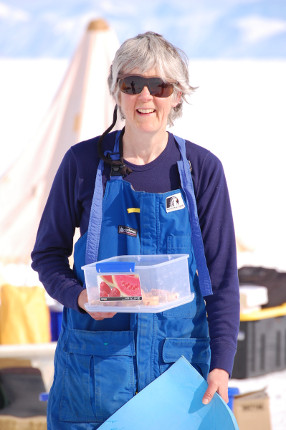Pat Langhorne

Sea ice researcher (1955-)
In Antarctica and the Arctic, when aircraft land on floating ice, catastrophic breakthroughs can occur. Pat Langhorne’s 1988 Nature paper examining the strength of sea ice runways1 made the journal’s front cover. The fieldwork involved Langhorne guiding a pilot by radio to fly so low that – without landing – it actually put a load on the sea ice, an experience she described as hair raising.2
Langhorne had wanted to go to Antarctica in the mid 1970s but was turned down for being a woman – even up to the 1990s, the United Kingdom still had a policy of not sending women to the Antarctic alone.3 She began working on sea ice in the Arctic but has now conducted many research visits to Antarctica, heads a research group at the University of Otago and is leading the field component of a programme to determine high latitude impacts of climate change in New Zealand.4
Image: Pat Langhorne. Source: Wikimedia Commons.
References:
1. V. A. Squire et al., ‘Vehicles and Aircraft on Floating Ice’, Nature 333, no. 6169 (12 May 1988): 159–61, doi:10.1038/333159a0.
2. ‘Pat Langhorne’, Curious Minds, 20 August 2015, http://www.curiousminds.nz/profiles/pat-langhorne/.
3. ‘Salem_V_Lit.Review.Pdf’, accessed 2 August 2017, http://www.anta.canterbury.ac.nz/documents/GCAS_4/Salem_V_Lit.Review.pdf.
4. ‘Pat Langhorne’, Wikipedia, 3 January 2017, https://en.wikipedia.org/w/index.php?title=Pat_Langhorne&oldid=758022166.
This profile is part of the series 150 Women in 150 Words that celebrates women’s contributions to expanding knowledge in New Zealand, running as part of our 150th Anniversary.
